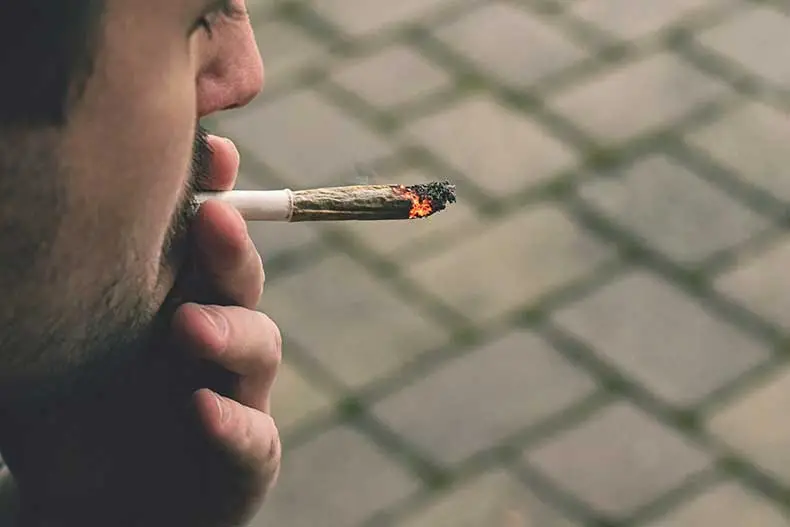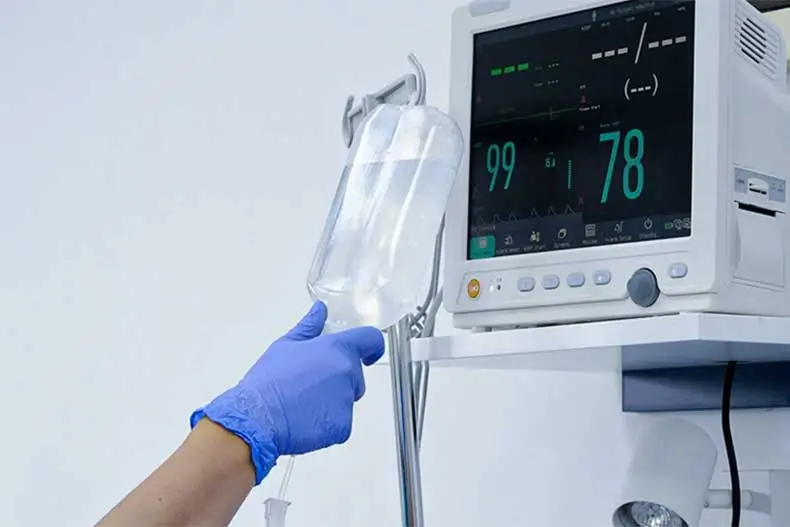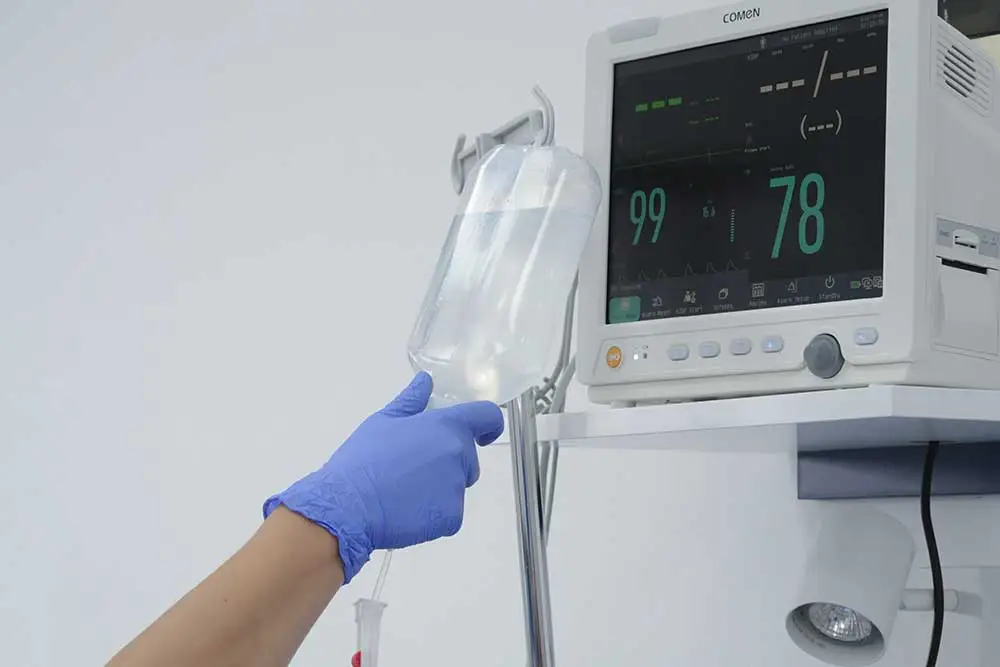Marijuana, also known as weed, pot, grass, green, ganja and similar names, consists of the dried leaves, flowers, stems, and seeds of the Cannabis sativa plant, which contains the psychoactive chemical delta-9-tetrahydrocannabinol (THC) and other related compounds. Cannabis plant material can also be concentrated into a resin known as hashish or a sticky black liquid called hashish oil. Marijuana is a psychoactive substance, and it is important to recognise the symptoms of its use, as it can have harmful effects on the body of the person consuming it.
Marijuana is the most widely used illicit drug in the world. It is most commonly smoked as a hand-rolled cigarette (joint), in a pipe or a bong. It is also smoked in a blunt—a cigar that has been emptied of tobacco and refilled with a mixture of marijuana and tobacco. Marijuana smoke has a sharp, distinctive sweet-sour smell.
Another method of consuming marijuana is by mixing the plant with food or brewing it into tea.
The use of medical cannabis began in America in the 1850s, when products containing cannabis extracts were manufactured and sold to relieve pain and muscle spasms. Shortly afterwards, pharmaceutical regulations were introduced in some states. Products containing habit-forming substances, such as cannabis, were often labelled as poisons and, in some cases, were only available with a doctor’s prescription.
Today, the government classifies marijuana as a “Class I” substance, meaning it has a high potential for abuse and is considered to have no medical use. However, several states have legalised marijuana for adult recreational use. Some states also permit the use of medical marijuana to treat specific medical conditions.
Marijuana abuse has increased significantly over the years. Although its illegal use is most common among adolescents, it is consumed by people of all age groups. The symptoms of marijuana use are often very noticeable and can lead to numerous negative effects. THC in the bloodstream causes not only a state of intoxication but also other short- and long-term effects.
Symptoms of Marijuana Use – How Does Addiction Develop?
Marijuana use and its effects can lead to the development of addiction, known as marijuana addiction. Recent data suggests that around 30 per cent of marijuana users may experience some level of marijuana use disorder. Individuals who begin using marijuana before the age of 18 are four to seven times more likely to develop a marijuana use disorder than adults. For this reason, it is important to be informed early about the symptoms of marijuana use.
Marijuana’s effects are evident in users who become irritable, have difficulty sleeping, experience mood swings, reduced appetite, cravings, restlessness, and/or various forms of physical discomfort. These symptoms peak during the first week after quitting and may last for up to two weeks. Marijuana addiction occurs when the brain adapts to large amounts of the substance by reducing the production and sensitivity of its own endocannabinoid neurotransmitters.
Marijuana use disorder becomes an addiction when a person is unable to stop using the drug, even though it interferes with many aspects of their life. Numerous studies suggest that 9 percent of people who use marijuana will become addicted. This figure rises to around 17 per cent among those who begin using it during their teenage years.
In the early 1990s, the average THC content of marijuana samples was below 4 per cent. By 2018, it had risen to over 15 per cent. Marijuana concentrates can contain significantly higher levels of THC.
The increasing potency of marijuana, combined with the use of high-THC concentrates, raises the possibility that the symptoms of marijuana use today may be more severe than in the past. THC in the body causes numerous effects on physical and mental health.
What Is THC?
THC, or tetrahydrocannabinol, is the chemical responsible for most of the psychological effects produced by marijuana. It has effects similar to those of cannabinoid chemicals naturally produced by the body.
Cannabinoid receptors are concentrated in specific areas of the brain associated with thinking, memory, pleasure, coordination, and the perception of time. THC in the body binds to these receptors, activates them, and affects memory, pleasure, movement, thinking, concentration, coordination, sensory perception, and time perception.
THC is one of many compounds found in the resin secreted by marijuana. Other compounds unique to marijuana, known as cannabinoids, are also present in this resin. One such cannabinoid, CBD, is non-psychoactive and actually blocks the high produced by THC.
THC in the Body – What Effects Does It Have?
THC in the body stimulates brain cells to release dopamine, creating a sense of euphoria. It also disrupts the way information is processed in the hippocampus, the part of the brain responsible for forming new memories.
THC in the blood can cause hallucinations, altered thinking, and delusions. On average, the effects last for about two hours and begin 10 to 30 minutes after consumption. However, psychomotor impairment may persist beyond this period.
In some cases, THC in the body may cause euphoria, anxiety, tachycardia, short-term memory issues, sedation, relaxation, pain relief, and other effects.
Symptoms of Marijuana Use – What Effects Does THC Have in the Blood?

Symptoms of Marijuana Use – How Does It Affect the Body?
When marijuana is smoked, THC rapidly moves from the lungs into the bloodstream, which then carries the substance to the brain and other organs. THC in the blood is absorbed more slowly when ingested through food or drink. It is important to understand the symptoms of marijuana use, as THC in the body can contribute to the development of addiction.
Regardless of how THC is consumed, it acts directly on the cannabinoid receptors in brain cells. These receptors are part of a neural communication system known as the endocannabinoid system, which plays a key role in the normal development and function of the brain.
The highest concentration of cannabinoid receptors is found in areas of the brain responsible for pleasure, memory, thinking, concentration, sensory and time perception, and coordinated movement.
Marijuana overstimulates the endocannabinoid system, leading to pronounced effects such as:
- Altered perception and mood
- Impaired coordination
- Difficulty with thinking and problem-solving
- Memory issues
- Reduced appetite
Research shows that the symptoms of marijuana use can cause or worsen difficulties in daily life. Users often experience poorer mental and physical health, more personal problems, and reduced academic or career success compared to non-users.
Symptoms of marijuana use are also linked to various health issues, particularly those affecting the heart, lungs, and mental health.
The most common health problems caused by marijuana include:
- Daily coughing and mucus production
- Frequent acute chest illnesses
- Increased risk of lung infections
- Weakened immune system
- Brain cell damage and harm to the central nervous system
- Impaired fertility
- Rapid heart rate and elevated blood pressure
Symptoms of marijuana use are also linked to other mental health issues, such as:
- Depression
- Anxiety
- Personality disorders
- Suicidal thoughts (particularly among adolescents)
- Lack of motivation
Numerous studies have associated chronic marijuana use with mental illness. The effects of marijuana can also worsen the course of illness in individuals with schizophrenia. Additionally, there is a recognised link between marijuana use and the development of psychosis.
Marijuana Effects – In What Other Ways Does It Affect the Body?
The effects of marijuana have been shown to be negative, particularly when it comes to brain development in young people. Symptoms of marijuana use that affect thinking and memory may last a long time—or even become permanent.
A study involving individuals who began using marijuana during adolescence found significantly reduced connectivity in areas of the brain responsible for learning and memory.
Research conducted in New Zealand showed that people who started smoking marijuana in their teenage years lost an average of eight IQ points between the ages of 13 and 38. The lost cognitive abilities were not fully recovered, even in those who stopped using marijuana as adults. In contrast, individuals who began using marijuana in adulthood did not show a significant drop in IQ, and the effects of marijuana were milder in their case.
In addition, because it impairs judgement and motor coordination, the symptoms of marijuana use increase the risk of injury or death while driving. Data analysis suggests that marijuana use more than doubles a driver’s risk of being involved in an accident. In this context, combining marijuana with alcohol leads to greater impairment of driving ability than any other substance.
The short-term effects and symptoms of marijuana use usually begin to subside after one to three hours. However, the long-term effects can last for days, weeks, or even months after use has stopped—and some may be permanent.
How Long Does Marijuana Stay in the Blood?
How long does marijuana remain in the blood depends on how it is consumed. In general, the detection period will be longer with higher doses and more frequent use. The duration also varies based on the dose and how often the drug is used.
Symptoms of marijuana use can be detected in bodily fluids between 1 and 30 days after the last use. As with many other substances, marijuana can be detected in hair for several months—particularly in individuals who use it daily or nearly every day.
With regular use, marijuana can be detected several months after the last instance of consumption.
One of the most prevalent compounds in cannabis is a chemical called THC. Drug tests detect THC in the blood as well as its by-products, known as metabolites. These metabolites remain in the body long after the symptoms of marijuana use have worn off.
The most common method of drug testing is a urine test. The effects of marijuana can be identified through the presence of THC in the urine:
- Single use: up to 3 days
- Moderate use (four times a week): 5 to 7 days
- Chronic use (daily): 10 to 15 days
- Chronic heavy use (several times a day): more than 30 days
Cannabis metabolites are fat-soluble, meaning they bind to fat molecules in the body. As a result, it can take longer for them to be eliminated, particularly in individuals with a higher body fat percentage.
Blood tests typically detect THC in the body within 2 to 12 hours. However, with chronic and frequent use, the detection window may be significantly extended.
Hair follicle tests can detect drug use for up to 90 days. After use, cannabinoids reach the hair follicles through small blood vessels, as well as from the sebum and sweat surrounding the hair.
Since hair grows at an average rate of approximately 1.27 centimetres per month, a segment of around 4 centimetres taken from close to the scalp can provide an estimate of marijuana use over the past three months.
THC in the blood – How long does it take to break down?
THC enters the bloodstream when a person smokes or consumes marijuana. It is temporarily stored in organs and fatty tissues and is broken down in the liver. THC has more than 100 metabolites. Drug tests detect these metabolites, which remain in the body longer than THC itself. Ultimately, THC and its metabolites are excreted through urine and faeces.
The length of time marijuana stays in the blood depends on how frequently it is used. More frequent use leads to a higher initial concentration of THC and its metabolites in the body. The greater the amount of THC metabolites present, the longer they will take to be eliminated.
Several factors influence how long marijuana remains in the blood. Some of these, such as body mass index (BMI) and metabolic rate, relate not to marijuana itself but to how the body processes and metabolises it.
Other factors concern the method of use, including the dose taken, frequency, and the strength of the cannabis.
Stronger marijuana, with a higher THC content, can remain in the body for longer. Marijuana that is ingested stays in the body longer than marijuana that is smoked.
THC in the body produces the following effects:
- altered senses, including perception of time;
- altered mood;
- difficulties with thinking and problem-solving;
- impaired memory;
- hallucinations or delusions.
Other short-term effects include:
- inability to focus;
- increased appetite;
- coordination problems;
- drowsiness;
- restlessness;
- rapid heartbeat;
- dry mouth and eyes;
- confusion;
- feeling sick or fainting;
- anxiety or paranoia.
In rare cases, large doses of marijuana can cause hallucinations and psychosis.
Smoking or regularly consuming marijuana has additional effects on both mind and body:
- cognitive impairments;
- memory impairment;
- learning difficulties;
- cardiovascular diseases;
- respiratory diseases;
- mood disorders, such as depression and anxiety;
- hallucinations and psychoses.
If marijuana is used during pregnancy or breastfeeding, there is an increased risk that the baby will have birth defects or problems with brain development.

Marijuana symptoms can disappear once and for all – Marijuana Addiction Treatment
Long-term drug use causes symptoms both from marijuana consumption and from withdrawal. These symptoms generally develop within a week of stopping use. Some of the most common marijuana withdrawal symptoms include:
- irritability, anger or aggression;
- nervousness or anxiety;
- difficulty sleeping;
- decreased appetite or weight loss;
- restlessness;
- depressed mood.
There are also physical symptoms such as stomach ache, shivering, sweating, fever and headache.
As many of these withdrawal symptoms can indicate warning signs of other conditions, professional help is essential.
Marijuana addiction treatment options at the MedTim clinic are highly effective and efficient. Therapies combining detoxification with psychological support from a therapist and motivation enhancement ensure recovery and reduce the risk of relapse.
The MedTim clinic programme is also ideal for educating patients, their families, and friends. As marijuana users develop an addiction, their tolerance increases, meaning they need to use more of the drug to achieve the same effects. Tolerance is a sign of addiction. People addicted to marijuana cannot stop using it, even when they notice harmful effects. If you experience any of these symptoms, it is time to seek help.
Although the symptoms of marijuana use and the effects of marijuana addiction are generally not considered as serious as those of other addictions, they can still lead to problems.
If you are concerned that someone you care about is using marijuana, recognising the signs of abuse is the first step.
Marijuana effects include:
- bloodshot eyes;
- increased appetite;
- lack of motivation;
- paranoid behaviour;
- impaired coordination;
- slow reaction time;
- dry mouth;
- memory impairment;
- anxiety;
- impaired judgment;
- distorted perception;
- relaxed state or sleepiness.
What exactly does marijuana addiction treatment look like?
- strong cravings for marijuana;
- depressed mood;
- anxiety and irritability;
- vertigo;
- problems with concentration;
- impotence;
- insomnia;
- loss of appetite.


